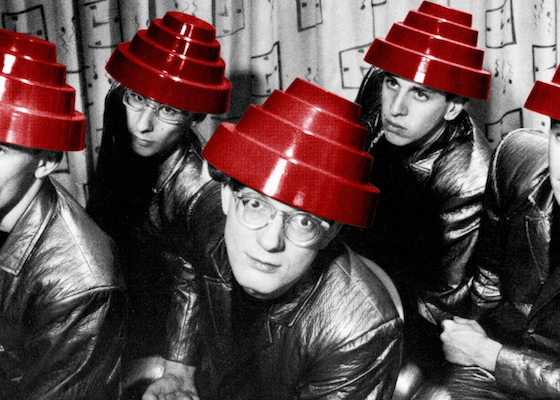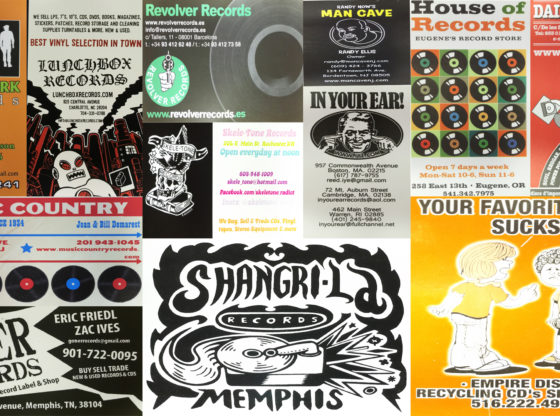So whats it worth then. There are many tools available to help you figure out what the record you are thinking of buying is worth, but the operative rule of thumb is always its worth what someone will pay for it. To help determine that, we provide the resources below.
Condition Condition Condition
Before you dive in, remember a few important rules. Record values are dependent on the condition of the record – both the vinyl itself and the sleeve, jacket and label. Just like real estate’s famed value rule – location, location location – record values start with condition. You want to be able to play it all the way thru, right? Records that are still sealed, and only records that are still sealed, are mint. Writing on the record, either on the sleeve or record itself (think the name of a prior owner) detracts from a record’s value, as do scratches. Sometimes a record is just dirty, and a cleaning can allow the record to play all the way thru. Warps are not good, but can get you a servicable copy of a rare record cheap (while waiting for a better one) if the warp does not affect play. This will sometimes be denoted as warp nap or wnap. Water damage detracts from a record’s value. Here’s a link to a very helpful article On Grading Records from Rather Rare Records.com. This is from the great Neal Umphred who wrote the book (actually books) on record pricing published by Goldmine, referenced below and sitting on my record book shelves.
What Release Do You Own/ Want To Buy
Which release of a record you own will also greatly impact a record’s value. First presses are typically the most sought after. Discogs provides a very helpful database of all releases of a particular record. You need to check carefully, as there are often many presses of a record, making it difficult to identify which you own. The cover can change, the label can change, and there can be a host of ways these changes can appear. Sometimes you need to look in the record’s run off at the matrix numbers to tell what release you own. Some records came with various inserts – posters, games, lyric sheets etc. See if your copy still has its inserts or someone pasted them on their wall. Misprints and mistakes also happen, and can often impact value. You also need to see the record’s country of origin. Sometimes, a non-US press is more valuable, and sometimes its not.
Barcodes
Barcodes started to appear on records in the late ’70s and early ’80s though each label made its own decisions. It is reported that A&M for example did not start using barcodes until 1990. The barcode can help identify which pressing of a record you have. If a barcode is not present, its an earlier release. Discogs has a helpful tool which lets you scan your album’s barcode and find matches in its database. Unfortunately, the record companies often put the same barcode on multiple releases, so you will still need to match your release to those Discogs presents in its barcode search results to find an exact match, and more accurate value information.
Scarcity – Limited Runs/Banned/Withdrawn
Some records were printed in limited runs, which typically makes them scarce and more valuable. Some records denote the quantity of the pressing with handwritten notations – no. 5 of 500. Some records were originally printed in a certain format, and subsequently withdrawn or changed at the record label’s request to better assist in marketing. Think the Beatles’ ‘butcher cover’ (aka Yesterday and Today) or David Bowie’s Diamond Dogs. Sometimes a record’s original release has lyrics or songs subsequently censored and removed due to drug or sex references. These subsequent actions increase the value of the original unaltered pressing. Jefferson Airplane’s first album Takes Off is an example of this. This article from Rare Records.net will give you additional ideas on what to look for to aid in determining which record you have.
The Mighty Popsike
Popsike is a website that lists countless records, and the price they sold for on various eBay auctions. The records are often pictured, and the site provides the eBay listing and the price the record sold for and the date of the sale, complete with description of condition, label and pressing. An invaluable tool.
Discogs Database
You can also use Discogs the great database program, but remember, they will only provide values of actual sales on their marketplace. The link will take you to a page of the Discogs site that will explain how to use Discogs to obtain information on record values. As explained, Discogs tracks sales of records in its marketplace. It provides information on the latest 30 sales as lowest, median and high. You can find this information by searching for the release you own in the database. On a PC the information is contained on the right hand side of the page. Remember, condition of sleeve and vinyl matters (this pricing information is not condition specific) and that you need to match the actual release you have against its match in Discog’s database. Notably, most record sellers use this database to get an idea of a record’s value.
Another useful record value database is provided by Value Your Music.com. The site provides information on record values from “an archive of over 33 Million sold auctions.” The site does not inform where the auctions took place, but I believe they are eBay auctions.
Goldmine Price Guides
Before the Internet, Goldmine magazine was one of the main tools record collectors used to buy and sell records. Sellers would advertise their records (either via auction or set sale) and the collector could pick and choose what he liked. The magazine also featured great articles on bands. Goldmine published a series of record price guides, authored/edited? by Neal Umphred and Tim Neely, which give extensive pricing information for records of various genres. These price guides are not online but used copies can be had on eBay. These guides include the Goldmine Price Guide to Collectible Record Albums (Neal Umphred), covering records from the ’50s to ’80s, Goldmine Record Price Guide (Tim Neely) Goldmine’s Price Guide to Collectible Jazz Albums (Umphred), and the Goldmine Standard Catalog of American Records, 1950 – 1975 (which has both albums and 45s) among others. Just remember, the price in the book is not necessarily the price its worth (and condition is important). And these books are now somewhat dated.
While on the subject of record value guides on the printed page, Record Collector magazine from the UK publishes its Rare Record Price Guide. Presently on its 18th edition, released in 2024, the Guide has been published bi-annually since 1986. Over 100,000 records are covered in 1200 plus pages. However, this appears only to provide values for UK pressings. Neither an artist’s entire catalogue is valued, nor are any values provided if the artist did not have any UK releases. Thus, for example, there are no listings for the great Brazilian tropicalia band Os Mutantes, or the Texas garage band Kenny and the Kasuals, because they had no UK releases. The Thirteenth Floor Elevators have listings, but none of the rare and valuable International Artists releases – a Texas based label – are addressed. Only the UK Radar/Decal reissues can be found. And the Charlie Musselwhite Blues Band has only one album listed – a release on Vanguard – while Mr. Musselwhite himself has none. Mr. Musselwhite is an excellent American harp and blues band leader, and put out many records. The Guide also has an online version, but apart from a free trial, it requires an annual subscription.
Hans Pokora – Record Collector Dreams
Hans Pokora with help from his friends has put together a series of books Record Collectors Dreams 1001 to 6001. Here’s a link to Record Collector Dreams online They are excellent, and provide pictures of rare and obscure ’60s and early ’70s psych, garage, progressive, beat, folk and rock albums you’ll likely never see, and an estimate of their value. In addition, these books cover records from bands that hailed from all over the world. The books themselves are well worth searching for for the pictures of the album covers alone (all first pressings), as well as the insight they give to great records from all over the world.
G45
G45 contains a list of 300 rare 1960s garage singles. If you own one of these, keep it safe. Its worth alot. The site tells you about the record and its relative rarity, and gives information on both the number of releases still around and a brief review of the record itself.
Current Sale Prices
You can also look at either eBay or Discogs, and see the prices at which sellers are offering to sell their vinyl. While it may give you information on current as of now values, it may also mislead, if the seller has optomistically or sentimentally overpriced his records.
The Record Store?
And sorry, no, you will not get a lot of money for your used records by taking them to the record store. The price for the convenience of ‘take them all’ or having the store owner come to your house to look and perhaps buy comes out of the funds you will get for your records. The store owner needs to make a profit too, no? If you want to get a better return, you will need to put in some effort. Selling on eBay or Discogs will enhance the return. Cleaning your records before you sell them will do the same.
Record Valuing – Inefficient Marketplace
Record valuing is not an exact science, and the marketplace can be very inefficient. This can make a particular record priced both too high or too low. Buying at a record fair or flea market can often lead to below market purchases. Not all sellers know all parts of the market, and may misprice records in areas they are not familiar with. They may also have many records, and it takes a lot of time to review and value each correctly. This may lead to bargains for you. You also tend to get bargains towards the end of a show, as the seller may need to make sales either to meet expenses, or simply to avoid lugging the record back for a later go at selling it elsewhere. But not always. Sometimes, prices at record fairs are over market – either because the seller over values his wares, or is hoping a collector will pay a premium to own that rare record he’s selling now.
Record collecting is a great hobby. This is particularly true because you can enjoy your vinyl by playing it on your turntable. And its even more fun when you pay less for it than what its actually worth.



